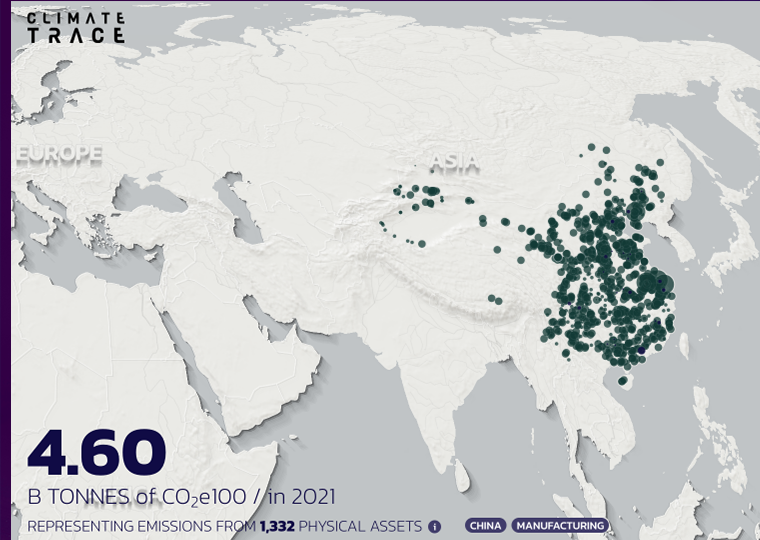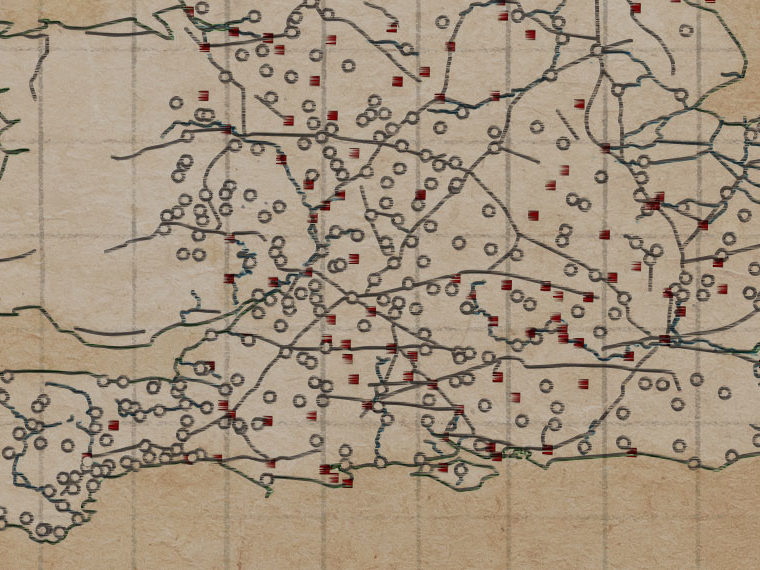Large-scale data project produces stark conclusion: military technology + agricultural productivity caused the takeoff
Generations of scholars have tried to explain what drove societies to evolve, over the past 10,000 years or so, from tiny settlements of a few hundred people to modern, highly organized states of hundreds of millions. A consensus has been elusive.
One obstacle was a lack of comparable worldwide data, spanning the ages. That has in part been solved by the creation of Seshat, a global history databank in which researchers systematically collected historical and archaeological data related to the social and political organization of human societies. Having a scientific basis for collecting historical data enables the rigorous testing of theories on how history unfolded.
Another obstacle was the lack of an agreed-upon definition of just what constitutes — and thus, how one measures — the evolution of a society. The recent development of the theory of cultural evolution has provided a theoretical framework. In a study published in Science Advances, a team of researchers across Europe and the U.S. use these tools to quantitatively test 17 theories that have been put forward to explain what drives social complexity.
Measures of Complexity in Societies
The goal of their paper is to identify which of various existing theories best predict the evolution of human societies and their complexity. The team was led by University of Connecticut’s Peter Turchin and included UCLA Anderson’s Romain Wacziarg. The full list of researchers is listed at the end of this article.
The research team settled on three measures of a society’s social complexity, or sophistication:
- Scale, or population and land area controlled
- Vertical or hierarchical complexity of a society’s administration, military and its settlements
- The degree of specialization of its government
The team also built statistical measures from the Seshat data, drawing on multiple factors, to capture the 17 explanatory theories. The team tested more than 100,000 combinations of the factors from the various theories to predict the three variables representing social complexity. Surprisingly, they found that a simple combination of just two classes of factors have the most predictive power as to when human societies expand in complexity: military technologies and agriculture.
Other theories didn’t measure up, including the establishment of irrigation, trade and use of a currency; the primacy of storage-friendly crops like grain over root vegetables; or a dominant religion based on moralizing gods that either unified people or, through human sacrifice, intimidated them.
“While the importance of agriculture in explaining the emergence of social complexity was already quite well-understood, what surprised us more was the strong explanatory power of military technologies — chiefly cavalry and weapons made of iron,” says Wacziarg.
The Seshat data is broken down into three levels. First by 10 world regions distributed widely across the globe. Then, within those regions, into 35 natural geographical areas — points in space that do not vary along the time dimension, such as Latium or Upper Egypt. Within the natural geographic areas, different political systems (“polities”) emerged. For example, the area comprising modern day Turkey (the Konya Plain) was successively part of different polities with varying geographic reaches, ranging from the Roman Empire, to the Byzantine Empire, to the Sultanate of Rum to the Ottoman Empire.

Key Variables
The researchers found strong statistical support for the variable that represents the joint spread of cavalry warfare and iron metallurgy for weapons. Overall, the effect of military technology and intensity on societal complexity was the strongest among all the theories tested.
Agriculture and the length of time agriculture existed in a society also were relevant predictors for all three variables of social complexity. “The rest of the hypotheses are not supported by the analysis,” the authors say.
The evidence, based on timing, was consistent with causality running from military technology and agriculture to social complexity: The researchers traced the path of mounted warfare from the steppes of Asia to other regions, finding that an increase in social complexity came in the centuries that followed.
“Mounted warfare was invented only once — by stateless people inhabiting the Pontic-Caspian steppes — and spread to the far ends of Afro-Eurasia and subsequently to all major world regions. Furthermore, agrarian empires, such as China, had to go to great lengths to secure plentiful supplies of horses needed for their cavalries. Cavalry, thus, is an exogenous measure of warfare intensity — a variable that excludes the possibility of reverse causality (from social complexity to intensity of warfare).”
The same holds for agriculture, its development leading to greater complexity of societies and vice versa, the researchers conclude. However, it’s just one piece of the puzzle. The authors write, “Our analysis confirms that increasing agricultural productivity is necessary but not sufficient to explain the growth in social complexity.” They note that 23% of the world regions where agriculture was common before 500 BCE failed to develop so-called macrostates (those controlling at least 100,000 square kilometers) before the year 1500, around the time of European worldwide expansion.
Such macrostates appeared following the spread of metal swords around 3000 BCE in Afro-Eurasia, including societies in Mesopotamia and Egypt. Chariots, pulled by horses, entered warfare after that, with armor-wearing combatants using composite bows. Societies in Anatolia and China grew bigger “with one, New Kingdom Egypt, breaking through the mega-empire threshold (1 million km2),” the authors note.
More Warfare, Bigger Societal Evolution
Gunpowder followed, making arms and warfare more intense, and societies over time grew bigger still.
“The North American continent did not develop an indigenous mega-empire comparable to Rome before 1500,” the researchers note. The Aztec Empire was relatively large and sophisticated in terms of societal organization and weaponry, though it lacked horses.
But Aztecs “controlled a tiny territory, by the standards of Eurasian empires (less than 30,000 km2 ). The main impediment was a severe limitation on their logistics arising from the need to move troops and supplies by foot,” the authors note. “It is probably not a coincidence that the only mega-empire in the Americas, the Incas, was in the area where domesticated transport animals (llama) were available.”
The Spaniards brought horses to the Americas in the 1500s and mounted warriors soon dominated. “During the 18th century, the Comanches became a hegemonic power, controlling the entire southern Great Plains. Their raids reached deep into Mexico and Texas,” the authors note. It was a short-lived dominance “soon overtaken by the gunpowder revolution.”
Larger-scale societies also became possible in Hawaii after the arrival of the Cook Expedition and Western weaponry in 1778. The islands had until then been ruled separately by chiefs. With more powerful weapons, a single ruler, Kamehameha I, took control.
University of Tennessee’s Sergey Gavrilets, Evolution Institute’s Daniel Hoyer, University of Oxford’s Pieter François, University of Washington’s James S. Bennett, TerminusDB’s Kevin C. Feeney, Lawrence University’s Peter Peregrine, Field Museum of Natural History’s Gary Feinman, National Research University Higher School of Economics’ Andrey Korotayev, Institute of History, Archaeology and Ethnology’s Nikolay Kradin, Evolution Institute’s Jill Levine, Complexity Science Hub Vienna’s Jenny Reddish, Evolution Institute’s Enrico Cioni, TerminusDB’s Gavin Mendel-Gleason, Complexity Science Hub Vienna’s Majid Benam and University of Oxford’s Harvey Whitehouse.
Featured Faculty
-
Romain Wacziarg
Professor of Economics; Hans Hufschmid Chair in Management
About the Research
Turchin, P., Whitehouse, H., Gavrilets, S., Hoyer, D., François, P., Bennett, J. S., … & Benam, M. (2022). Disentangling the evolutionary drivers of social complexity: A comprehensive test of hypotheses. Science Advances, 8(25), eabn3517.






